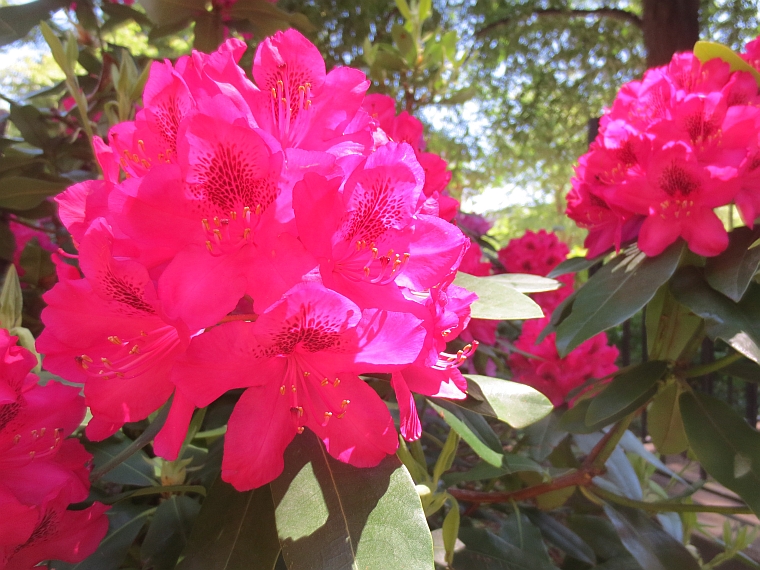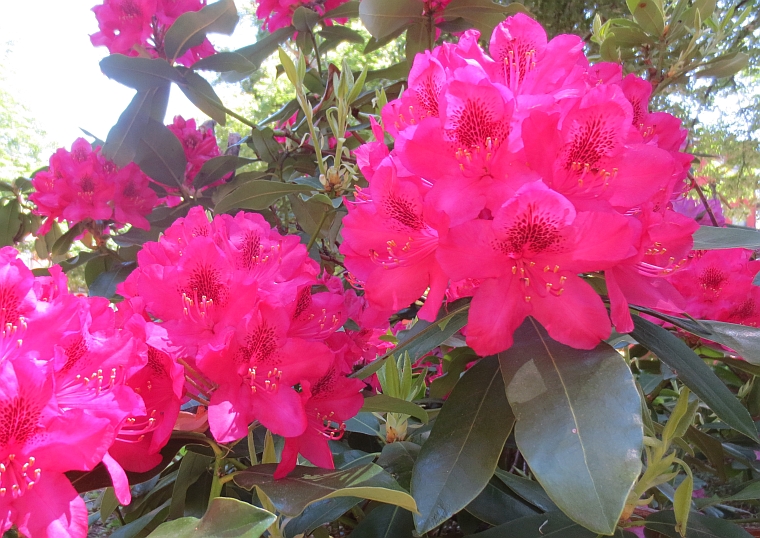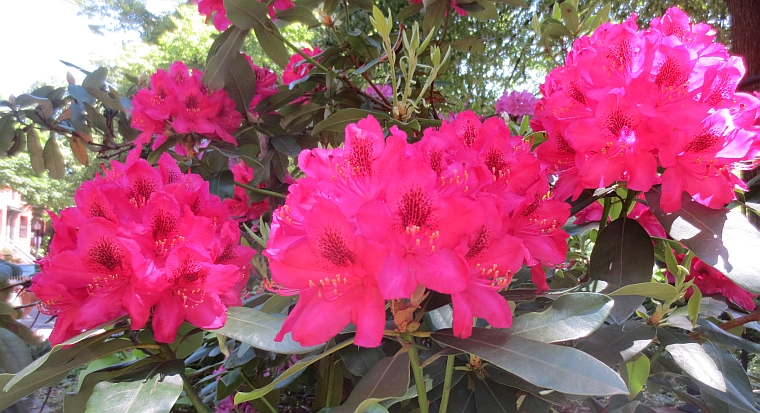Certain people loathe hydrangeas, others loathe rhododendrons. I’m in the latter camp. When we bought our home, a gigantic rhododendron stood in front of the large window of the living room. It blocked the light and the view year-round, with its evergreen foliage and enormous stature. In late spring, it bloomed in the traditional bright magenta – a color I usually love, except in the ubiquitous form of the rhododendron. The trouble was, I had no clear idea of what to do in its stead, so it stayed in its spot, growing larger and larger from year to year, despite my futile pruning attempts.
Eventually I couldn’t take it anymore, and early one spring I chopped it down. This was a difficult endeavor. The trunks were thick and gnarled, and the roots had twisted in on themselves. It was a stubborn thing that initially refused to budge. I let it go for a few days before hacking away at it with a hatchet. Finally, it released its hold, and I fell backward in a shower of dirt and sweat.
I amended the soil and planted a double-file viburnum where the rhody used to be, in a poorly-thought-out moment of viburnum obsession. I hadn’t realized the importance of the former’s evergreen nature, and when winter came the bare branches made me question my decision. In another year, the fast-growing branches of the viburnum had reached the same proportion of the rhody that I’d taken down, leaving me with the same predicament.
Once again, I got out the saw and hatchet, and chopped away at another overgrown specimen. This was the ruthless part of gardening that, once I made up my mind to do it, I executed with cruel deliberation. Even in its relatively short time, it had somehow burrowed deeper than the relatively-shallow-rooted rhododendron, its long tap root extending beyond comprehension. I had to dig an enormous well around it just in order to get deep enough. For having such a delicate flower form, the viburnum is a hardy wench, but I fought until its death, because a gardener doesn’t give up. In the end, a bare patch of ground remained.
I didn’t move hastily to fill in the spot, enjoying the expanse for a bit and carefully contemplating what to do. The answer presented itself when an umbrella pine in the background outgrew its space beside and beneath a weeping cherry. On a rainy afternoon, I dug it gently out of the only home it had ever known and put it into the empty space that always seem to fill too quickly. The slow-growing nature of the umbrella pine was perfect for the spot, and we would have years before it would even need to be pruned.
Back to Blog


